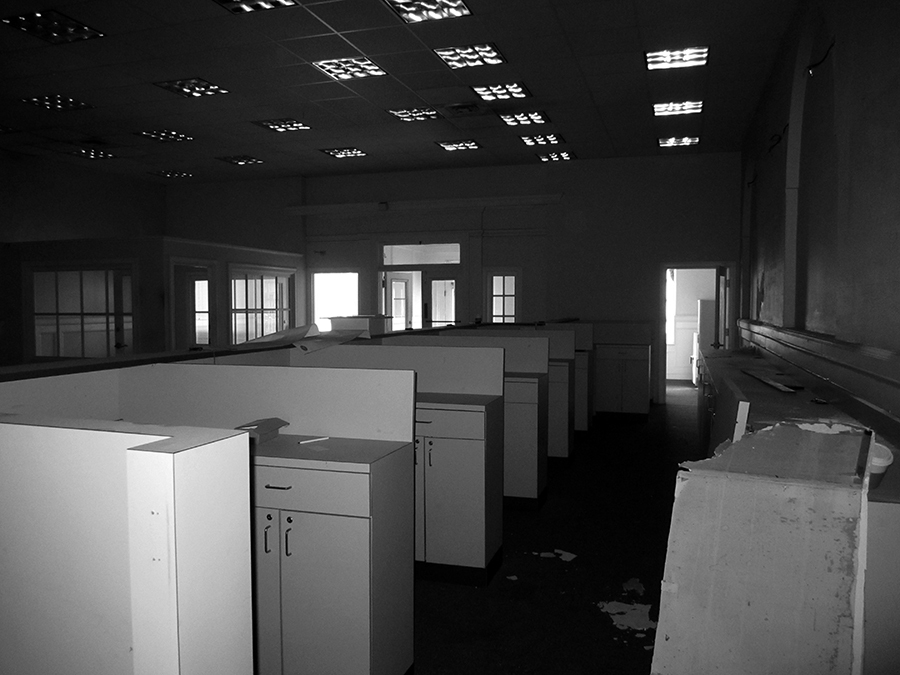When you visit your favorite restaurant or discover a new one, what do you notice the most about your experience? The food and drinks are of course an important part of dining out, as well as the service, but the architecture of the building around you can have a significant influence on your visit.
For many new restaurants in Charleston, David Thompson of David Thompson Architect is the one who helps make the visions of restaurateurs a reality. David is the architect behind some of the most influential restaurants in Charleston, including FIG, Butcher & Bee, The Grocery and more.
I had the pleasure of talking with David about how he started his career in architecture, why restaurant design has more in common with residential design instead of commercial, and about the stories behind both The Cigar Factory and The Ordinary.
How It All Began
David Thompson knew at an early age that he wanted to pursue architecture as a career (in 1st grade to be specific). It all started when a famous playground designer came to his school in Northern Virginia to create a new playground at a time where there was a movement in the industry. “It was a revolution in playground design where they were going from the really minimalist, awesome metal playgrounds of our grandparents time to really elaborate maze-like wooden structures,” said David. The designer selected a representative from each grade to help design the playground, and David was the one chosen to represent his first-grade class. Although elements of architecture were in his genes (his father was a land developer along with a grandfather who was a house framer), this moment was what lead him to the career he has today.
Upon arriving to Charleston in 1999, David worked mostly on development related projects like office buildings and strip malls, which didn’t appeal as much to him. In his next job, David primarily designed elementary schools in the Lowcountry (including Mary Ford, Malcolm C. Hursey, and the Early Childhood Development Center). Although this was a more rewarding experience, it was after he joined Reggie Gibson Architects when restaurants became part of his focus.
What Makes Restaurant Design Unique
“Well, the interesting thing about restaurants is that for such a small project they are really complicated. In some ways building a new building from the ground up is simpler than designing a restaurant. Restaurants are kind of the perfect storm between residential design and commercial design. So you have all this attention to detail, craftsmanship and interior design that's much more like residential design, but in a commercial application.“
Even if designing a restaurant feels more like a residential project at times, the process is much faster. While custom residential projects can take years, the average restaurant for David Thompson Architect takes only 12-14 months - from design to opening. “It’s really fast and intense, which is fun but stressful.”
Outside of the speed and intensity, there’s also a level of care and investment in restaurant design that’s not normally seen in commercial projects. During the process, an intense relationship is formed between the architect and the restaurant owner and operator. “One of the reasons the process its so rich is because it means so much to them.”
Uncovering the Past for the Present
The Cigar Factory is one of the more notable projects David Thompson has been involved in, and for that project (like many renovation projects on the peninsula), there was a unique story behind the building that was important to preserve in its next life.
“Our personal belief inside this office is that restaurant design, and really any design, is an opportunity to tell a story. So sometimes you have to make that story up - and a lot of restaurant design involves sort of a fantasy component. It's like a theater project. But it's better when it's real and it's authentic. One of the great things about renovations in Charleston is the story’s usually there- you just have to uncover it. Then it's all about how you want to present it - how does it then weave into the story of whoever's using space now? Because it's not just all about what used to happen. It’s what happened first, second, third, and now what is going to happen next.“
With some of these renovations, however, an uncovery and discovery process happens first, especially when a historic building is updated by others for modern-day use. The Cigar Factory was unique since its previous use was relatively utilitarian, which did not require much to be stripped away. The bigger challenge was preserving the architectural integrity of the building while also adhering to modern day building codes.
“There’s a battle of compromise of how much can you do so without losing too much - and can you just make the best of it. I'd say a good example of that in Mercantile and Mash is that although the developer already structurally reinforced all the floors, they had not done the same for the columns. So you had these big, beautiful wood columns throughout the space, and as you start to add weight to them they actually were so old they wanted to bust. The knee-jerk reaction and simplest thing would be to sandwich them with all this wood and you never see them again. We developed this really beautiful steel strap that is basically like a girdle for the column- so when under pressure and they don't explode. And it's in the style of the industrial connections you would have found through the building. I don't think people probably realize that those are new, and for me, that's a win. I think it's great when that line gets blurred. It's not a copy but it's done in the right spirit to where it doesn't jump out at you with a flashing neon light.’’
The Ordinary, from an uncovery and discovery process, was a very different project. Prior to its transformation into one of the standout seafood establishments in the Southeast, 544 King Street was home to a branch of Bank of America. From the outside, you can tell that it is a beautiful building, but according to David, no one involved, from the contractor to Mike Lata, really understood how concealed the beauty of this building was until walking inside.
“When we walked in there was a standard office ceiling at about 11 feet with fluorescent lights, cubicles and carpet. And the only thing you saw that gave you any hint of something cool going on was the vault door that's still there.” Once they started removing walls, beautiful brick walls with recesses that matched the windows outside were revealed, and a stairway hidden within offices in the back of the building lead to the discovery of a mezzanine. “When you went on the mezzanine and looked over the drop ceiling, you realized there are 10 to 12 more feet up there. And then you could see the ceiling that you see today - it had just all been covered up. It was unbelievable.”
The Importance of Local
As David mentioned earlier, telling the story of a building through architecture even after a renovation is an essential part of the process. On projects like The Ordinary and The Cigar Factory, David collaborates as much as he can with local artisans and craftsman. During the discovery phase of a project, so much is revealed, and having someone nearby to “freestyle with” at a moments notice is invaluable, especially when the unexpected is revealed.
“You can get online and find any number of reclaimed wood guys that will sell you beams from Germany or anywhere else - beams that look really believable. But it just doesn't enrich the process. And it also doesn't do anything for your local economy. As important as the design component is the localist perspective of keeping money in Charleston and supporting local businesses.” Outside of supporting the local economy, local artisans have a sense of ownership in the process that is hard to achieve when working with someone outside of the region. “When you bring artisans in and don't try to prescribe the entire design for them, and instead let them participate, you get so much more because they believe in as much as you do and it has their signature on it.”
Also at: https://charlestonwineandfood.com/2018/02/13/beyond-plate-art-restaurant-design-david-thompson/






